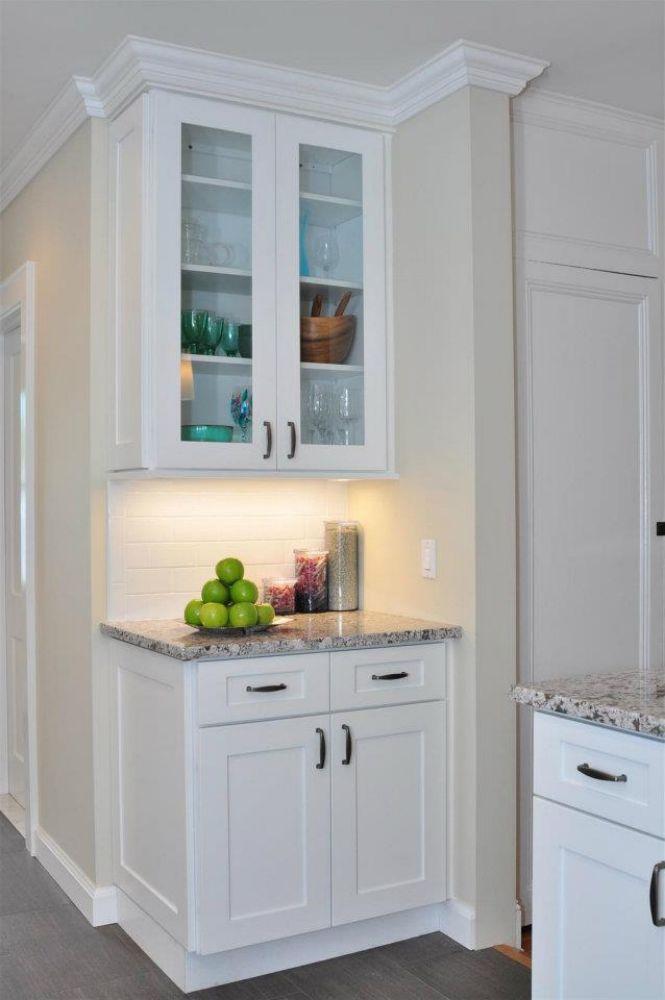Understanding the Concept of Reducing Indoor Air Pollution with Cabinets
Indoor air pollution is one of the most underestimated health hazards in modern homes. From cleaning supplies to paint and furniture finishes, countless items release volatile organic compounds (VOCs) that contaminate the air we breathe. Cabinets, being an integral part of every kitchen, bathroom, and living space, can either contribute to or help reduce indoor air pollution depending on their construction materials and finishes.
Reducing indoor air pollution with cabinets is a concept that promotes the use of eco-friendly, low-emission materials to maintain healthy indoor environments. When cabinets are designed and manufactured using sustainable practices, they minimize the release of harmful chemicals into the air, improving indoor air quality and supporting overall well-being.
The Link Between Cabinetry and Indoor Air Quality
Cabinetry is often built from composite woods like particleboard, MDF (medium-density fiberboard), and plywood. These materials are bound with adhesives and resins that can release VOCs, particularly formaldehyde, over time. The more of these products you have in your home, the more pollutants accumulate in the indoor air.
However, by reducing indoor air pollution with cabinets, homeowners can take a proactive step toward cleaner living. The right cabinetry—constructed with certified low-emission materials—reduces exposure to toxic gases and chemicals that can cause allergies, respiratory irritation, or even long-term health concerns.
The Role of Greenguard Gold Cabinets in Healthier Homes
One of the most effective ways of reducing indoor air pollution with cabinets is by choosing certified products such as Greenguard Gold Cabinets. These cabinets are rigorously tested and certified to meet the highest indoor air quality standards.
Greenguard Gold certification ensures that cabinetry releases minimal VOCs, keeping your home environment fresh and healthy. These cabinets undergo extensive testing for over 10,000 chemical compounds to verify compliance with strict emission limits. As a result, they are considered safe for sensitive environments such as schools, hospitals, and homes with children or the elderly.
By investing in such certified cabinetry, homeowners not only enhance the appearance of their interiors but also make a significant contribution to better air quality and overall health.
Understanding VOCs and Their Impact
Volatile Organic Compounds (VOCs) are gases emitted from various solids or liquids, including paints, adhesives, and wood finishes commonly used in cabinetry. Prolonged exposure to VOCs can cause symptoms such as headaches, dizziness, nausea, and irritation of the eyes, nose, and throat. In severe cases, chronic exposure can contribute to more serious respiratory or neurological disorders.
Reducing these compounds through low-emission cabinets is one of the most effective methods for reducing indoor air pollution with cabinets. By selecting products that use water-based or natural finishes and formaldehyde-free materials, homeowners can drastically limit the number of pollutants circulating in indoor spaces.
How Cabinets Can Either Pollute or Purify Indoor Air
While poorly made cabinets can emit harmful fumes for years, modern low-emission options are designed to promote air cleanliness. Manufacturers now utilize innovative technologies to seal materials and finishes in a way that prevents off-gassing—the process by which chemicals escape into the air.
Incorporating reducing indoor air pollution with cabinets as part of a home improvement plan means choosing products that are specifically engineered to prevent toxic buildup. These cabinets act as both storage solutions and tools for air purification, creating a safer and healthier living environment for families.
The Science Behind Low-Emission Cabinet Design
Reducing the environmental and health impact of cabinetry begins at the design and manufacturing stage. Low-emission cabinets use non-toxic adhesives, sustainable materials, and eco-friendly finishes that comply with stringent emissions standards.
This innovation ensures that even after installation, your cabinets won’t release harmful chemicals into your home. The shift toward reducing indoor air pollution with cabinets reflects a broader commitment by the cabinetry industry to align with sustainability and public health initiatives, ensuring that your kitchen and bathroom are as safe as they are stylish.
Benefits of Using Low-Emission and Eco-Friendly Cabinets
The advantages of choosing low-emission cabinetry go far beyond air quality. Some of the key benefits include:
-
Improved health and comfort: Cleaner indoor air reduces the likelihood of headaches, allergies, and respiratory discomfort.
-
Long-lasting freshness: With fewer pollutants, your home smells cleaner and feels fresher over time.
-
Environmental responsibility: Choosing low-emission materials helps reduce the global carbon footprint.
-
Higher resale value: Homes equipped with eco-friendly materials are increasingly desirable to modern buyers.
Ultimately, reducing indoor air pollution with cabinets ensures a healthier, more sustainable, and future-ready home environment.
The Connection Between Sustainable Materials and Air Quality
Sustainable materials such as bamboo, solid hardwood, and reclaimed wood not only look beautiful but also contribute to reducing indoor air pollution with cabinets. These materials, when sourced responsibly and finished with low-VOC coatings, maintain the integrity of the indoor environment.
Manufacturers focused on sustainability are now integrating green materials into cabinet designs to limit exposure to toxins and preserve natural resources. This approach creates a balance between design aesthetics and environmental consciousness.
The Importance of Proper Cabinet Finishes
The type of finish applied to cabinets plays a major role in indoor air quality. Traditional finishes often contain solvents that emit VOCs long after application. Low-VOC or water-based finishes, on the other hand, significantly minimize emissions.
Choosing cabinets with such finishes is essential for reducing indoor air pollution with cabinets because it eliminates one of the most persistent sources of indoor toxins. These modern finishes are durable, resistant to moisture, and enhance the natural beauty of the wood—all while keeping the air pure.
Reducing Indoor Air Pollution with Cabinets in Kitchens
The kitchen is often the most active and polluted area in a home due to cooking fumes, heat, and the use of cleaning chemicals. Cabinets in this space must therefore be built to minimize additional air contaminants.
Installing low-emission cabinets in the kitchen ensures that this central gathering place remains healthy. Using Greenguard Gold-certified cabinetry, for example, can drastically improve air circulation and minimize chemical exposure, especially in compact kitchen layouts.
Through reducing indoor air pollution with cabinets, families can create kitchens that are both functional and health-focused—spaces that promote well-being every time a meal is prepared.
Reducing Indoor Air Pollution with Cabinets in Bathrooms
Bathrooms also benefit greatly from low-emission cabinetry. Moisture can exacerbate off-gassing from traditional cabinets, making bathrooms potential sources of indoor air pollutants.
By using cabinets designed for reducing indoor air pollution, homeowners ensure that humidity doesn’t trigger harmful emissions. Low-emission bathroom cabinets resist mold, mildew, and other pollutants, creating a clean and refreshing atmosphere even in high-humidity areas.
Certifications to Look for When Choosing Low-Emission Cabinets
To ensure you’re purchasing cabinetry that supports clean air, it’s important to look for certain certifications. These include:
-
Greenguard Gold Certification – Indicates extremely low VOC emissions suitable for sensitive environments.
-
CARB Phase 2 Compliance – Meets California Air Resources Board standards for formaldehyde emissions.
-
EPA TSCA Title VI – Ensures compliance with national air safety standards.
-
LEED Contribution – Helps earn points toward sustainable building certifications.
Each of these certifications validates the product’s role in reducing indoor air pollution with cabinets while ensuring quality and environmental responsibility.
Long-Term Health Benefits of Cleaner Air Indoors
Clean air is essential for maintaining good health. Reducing chemical exposure in your home through the use of certified cabinetry helps prevent a range of chronic conditions such as asthma, allergies, and respiratory illnesses.
Children and elderly individuals are especially vulnerable to indoor pollutants, making reducing indoor air pollution with cabinets a vital choice for family safety. Over time, homeowners experience noticeable improvements in sleep quality, concentration, and overall well-being.
Aesthetic and Functional Value of Low-Emission Cabinets
Health and aesthetics can coexist beautifully. Low-emission cabinets are available in a variety of finishes, colors, and styles to complement any home design. From sleek modern lines to rustic farmhouse textures, these cabinets combine functionality with elegance.
As more designers and homeowners embrace the trend of reducing indoor air pollution with cabinets, manufacturers continue to create innovative designs that meet both environmental and stylistic needs.
How Manufacturers Contribute to Cleaner Air
Manufacturers play a critical role in ensuring the success of eco-friendly cabinetry. Leading companies adopt cleaner production processes that minimize chemical use, recycle waste materials, and rely on renewable energy sources.
This commitment aligns with the goal of reducing indoor air pollution with cabinets on a larger scale—protecting not just individual homes but also the planet. Such sustainable practices set new industry standards and encourage continuous innovation in green manufacturing.
Maintaining and Cleaning Low-Emission Cabinets Safely
Proper maintenance is key to preserving both cabinet quality and indoor air purity. Cleaning low-emission cabinets should be done using non-toxic, fragrance-free cleaning products. Harsh chemicals can reintroduce pollutants into your home environment, undoing the benefits of eco-friendly cabinetry.
Using gentle, natural solutions such as vinegar, baking soda, or plant-based cleaners supports the goal of reducing indoor air pollution with cabinets while keeping them in pristine condition for years.
The Financial Value of Choosing Eco-Friendly Cabinets
While low-emission cabinetry may cost more initially, the long-term financial and health benefits far outweigh the upfront investment. Homes with eco-friendly features often have higher market values, and families save money by avoiding medical expenses related to poor indoor air quality.
By reducing indoor air pollution with cabinets, homeowners enjoy cleaner living spaces and long-lasting cabinetry performance—making it both a smart and sustainable financial decision.
Reducing Indoor Air Pollution with Cabinets in Commercial Spaces
Businesses, schools, and healthcare facilities can also benefit from installing low-emission cabinetry. In high-traffic environments, maintaining clean air is essential to productivity and wellness.
Certified cabinetry ensures that employees, students, and patients experience fewer health irritations caused by chemical exposure. As a result, reducing indoor air pollution with cabinets contributes to better indoor environments and enhanced well-being across all settings.
The Future of Cabinet Manufacturing and Air Quality Innovation
The cabinetry industry continues to evolve toward greener and healthier production methods. Emerging technologies such as bio-based adhesives, non-toxic sealants, and recycled composite materials promise even greater reductions in emissions.
The commitment to reducing indoor air pollution with cabinets will remain a driving force behind innovation, reshaping how manufacturers approach design, materials, and construction. The ultimate goal is a future where all homes and buildings maintain safe, breathable indoor environments.
Conclusion: Building Healthier Homes with Cleaner Cabinets
Creating a healthier home starts with mindful choices. By focusing on reducing indoor air pollution with cabinets, homeowners can transform everyday spaces into safe, sustainable, and comfortable environments.
Opting for certified low-emission cabinetry, such as Greenguard Gold Cabinets, is a powerful step toward cleaner air and better health. These cabinets not only enhance the beauty and functionality of your home but also protect your family from invisible pollutants.
In the long run, the benefits extend far beyond aesthetics—improved health, environmental responsibility, and peace of mind define the true value of eco-conscious living. When you invest in cleaner cabinetry, you invest in the future—one breath at a time.

